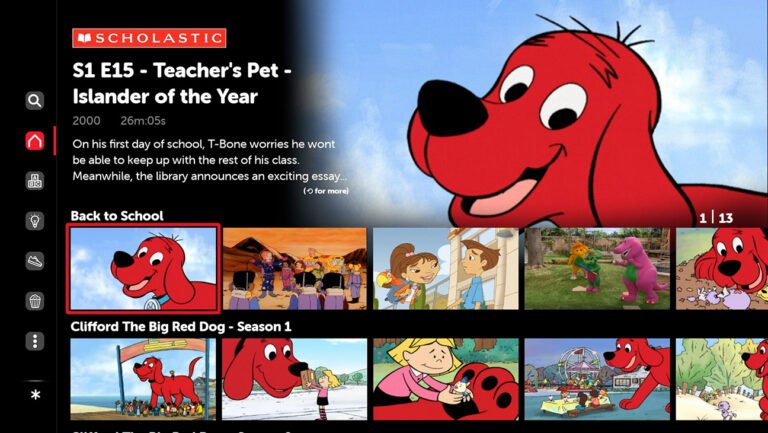How Movies Increasingly Drive Streaming Revenue
For years, the narrative has been that movies, in contrast to TV series, were in decline — casualties of a once-in-a-century pandemic that shuttered theaters and a double blow from prolonged industry strikes. But there’s new data that paints a different picture. Streaming services are, in fact, relying more than ever on films to keep…
For years, the narrative has been that movies, in contrast to TV series, were in decline — casualties of a once-in-a-century pandemic that shuttered theaters and a double blow from prolonged industry strikes. But there’s new data that paints a different picture. Streaming services are, in fact, relying more than ever on films to keep their growth engines humming.
In the linear era, success was about scheduling and ratings. In streaming, it’s all about acquisition and retention. Every day, a platform lives or dies by its ability to attract and keep subscribers — audiences who are then monetized through subscriptions and ads. In this constant battle against churn, movies are proving to be one of the most efficient tools streamers have to keep viewers coming back.
At Parrot Analytics, where I lead the applied analytics team, we analyzed thousands of titles — both series and films — across Amazon Prime Video, Disney+, Netflix, and Max. Using our demand and engagement data, we calculated how each title contributed to actual revenue in the U.S. market.
We built “lookalike” audiences to model both current and prospective subscribers and trained those models against reported revenues. This allowed us to estimate each title’s contribution to acquisition and retention — and to attribute total revenue between TV and film content.
The results were striking:
— In 2022, movies represented roughly 27 percent of total streaming revenues.
— By 2024, that share had climbed to nearly 50 percent.
— Within movie-driven revenue, Pay-2/3 and library windows now account for about two-thirds of total movie value, up from just 26 percent in 2022.
These numbers align with what we see in Netflix’s own engagement reports — older films from as far back as 2020 continue to generate meaningful viewership. Movies consistently punch above their weight, delivering disproportionately high engagement relative to the volume of content hours they represent.
Why It’s Happening Now
1. The Churn Factor
As streaming markets mature, churn management becomes mission-critical. Netflix’s Co-CEO, Ted Sarandos has repeatedly emphasized that their film library is where “members go to watch their weekend movie.” That habit creation — and the emotional comfort it provides — translates directly into lower churn and higher lifetime value.
2. The Profitability Pivot
Wall Street’s mandate for profitability has forced platforms to scrutinize development pipelines and optimize ROI. Licensing third-party films — particularly those in later pay windows — offers more predictable economics and higher margins than producing new, untested series. As HBO’s Casey Bloys noted early this year in an interview with Puck, the company is now focusing on the content its subscribers actually watch — which increasingly includes Pay-1 films.
3. The Supply-Side Shift
Film distributors are also evolving. As theatrical windows narrow and global streaming demand expands, producers are finding new ways to monetize catalog and genre-driven content. Jeff Sackman and Berry Meyerowitz of Quiver Distribution note that movies continue to play “a critical role in the premium streaming landscape,” with genre diversity and talent driving engagement across PVOD, TVOD, Pay-1, and library windows.
What’s Next: From Movies to Sports
This resurgence of movies as a streaming retention tool offers a fascinating blueprint for what’s next. We’re now seeing sports emerge as the next great frontier — offering live engagement and ad-monetization potential that films can’t match. But the economics are far more complex: sports rights are concentrated, expensive, and often yield tighter margins.
If movies are streaming’s quietly dependable workhorses — As Parrot advisor Larry Aidem has put it, “TV series monopolize attention and marketing budgetsand far too often seemlikeindependent films without editors” —sports may become its high-stakes experiments.
The key for platforms will be to find the right balance, combining the dependability of film libraries with the cultural heat of live events. At Parrot Analytics, we see this evolution not as the decline of any format, but as a rebalancing of the entertainment industry guided by the attention economy, one where films are once again proving indispensable.
Alejandro Rojas is the vice president of applied analytics at Parrot Analytics, where he runs Parrot IQ consulting, a unit that builds custom models and solutions from Parrot’s proprietary data to help clients assess and predict the value of content led strategies. Alejandro is a former McKinsey consultant who was also a TV executive producer.
For more streaming data from Nielsen, Comscore and Parrot Analytics, including trending series by platform, visit THR Charts.







